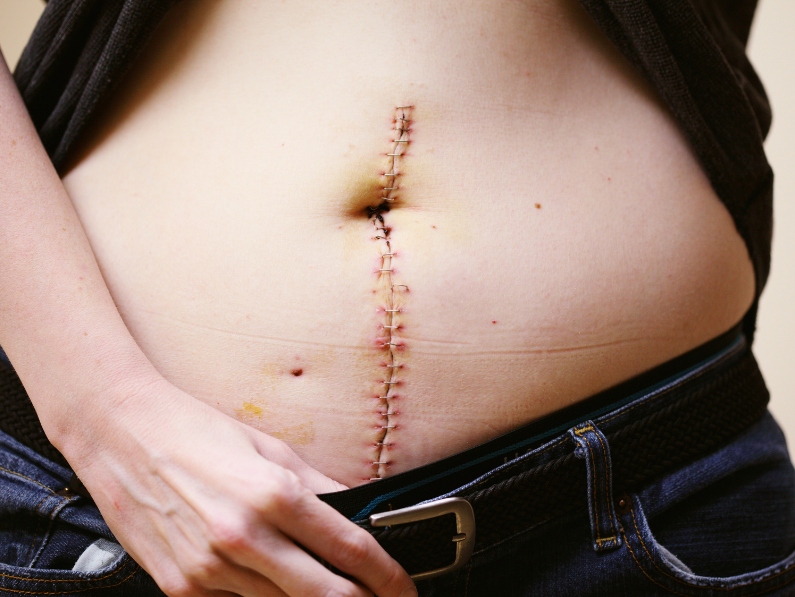Inflammatory foods have a significant impact on your menstrual health. For instance, pro-inflammatory foods can increase endometriosis symptoms such as pelvic pain, endo belly, and painful periods. Hence why choosing to decrease these food triggers when possible is beneficial. This may decrease many of the symptoms mentioned earlier and reduce painful period cramps. So, let’s talk about four of the most common inflammatory foods and how they impact endometriosis.
Page Contents
Inflammatory Food #1: Sugar
Whether I’m on my period or not, I love a tasty sweet treat such as cookies, brownies, cupcakes, and donuts. You know, all the yummy stuff. But, these are the biggest triggers for cramping and pain during menstruation. Sugar is considered a pro-inflammatory trigger because consuming large quantities of it increases inflammatory markers in the body.
And while researchers are a little unclear as to why sugar is so inflammatory, it’s suspected that it stimulates the development of fatty acids in the liver, which triggers an inflammatory response once digested.
As if that isn’t bad enough, excess sugar can also contribute to issues with increased fatigue, constipation, and diarrhea. So, choosing to cut back on how much sugar you allow yourself to consume during your period may help with alleviating pain.
Inflammatory Food #2: Red Meat
Before my endometriosis diagnosis, I consumed a lot of red meat, especially during my period. I knew that red meat was high in iron and thought it would be beneficial due to my heavy menstrual flow. However, I’ve now learned that red meat contains prostaglandins, which are the enzymes produced by our body during menstruation.
Their primary purpose is to encourage the uterus to contract and expel the uterine lining. But, when the levels become too high, they increase cramping and digestive distress. Since I’ve severely reduced the amount of red meat I consume, I’ve noticed a significant improvement in my pain and cramping during my periods.
Inflammatory Food #3: Caffeine
As heartbreaking as it is for me to write, I’ve discovered that consuming a lot of caffeine during my period made my cramps worse. Why is this so? Well, caffeine is a vasoconstrictor that causes the blood vessels within the body to constrict and tighten. This leads to the blood vessels within your uterus compressing, making the uterus work that much harder to expel the lining—thereby leading to more painful cramps.
And, while I’d love to say I’ve nixed all caffeine when I’m on my period, that would be an egregious lie. So instead, I remain intuitive and listen to my body. Usually, this means switching to decaf or half-caff the first two to three days of my period. My body responds quite well to this approach.
Inflammatory Food #4: Processed Foods & Fried Foods
I always crave carb-laden foods during my period. Maybe it’s because they’re comforting, or perhaps it’s because they don’t require as much preparation when I’m tired and don’t feel like cooking. Whatever the reason, I often gravitate towards these foods at the start of my period. However, something else I’ve noticed is that the more of these foods I consume, the more pain and discomfort I experience.
Upon this discovery, I’ve learned that these foods contain additives and industrially processed oils, which increase prostaglandin levels. And as I shared earlier, increasing prostaglandins during your period will only amplify pain and discomfort in the form of cramps, low back pain, and digestive issues. And while decreasing this food type usually means I’m going to spend more time cooking and preparing food, it’s worth it since I’m not in as much pain and discomfort.
Listen to Your Body
When it comes to period cramps and endometriosis pain, everyone’s experience will be different. My food triggers are not going to be your triggers. Hence, you should listen to your body and pay attention to signs that certain foods increase your period pain.
Keeping a food journal and noting how certain foods make you feel and if they contribute to pelvic cramping can be helpful. If you notice specific patterns, experiment with decreasing or removing those foods.
And opt for suitable alternatives while remaining mindful and observant of how your body reacts to these changes.
At the end of the day, it’s all about trial and error when it comes to nutrition and pain management. Start with the basic principles of a well-balanced diet and make changes and adjustments according to what’s best for you and your body.
References








